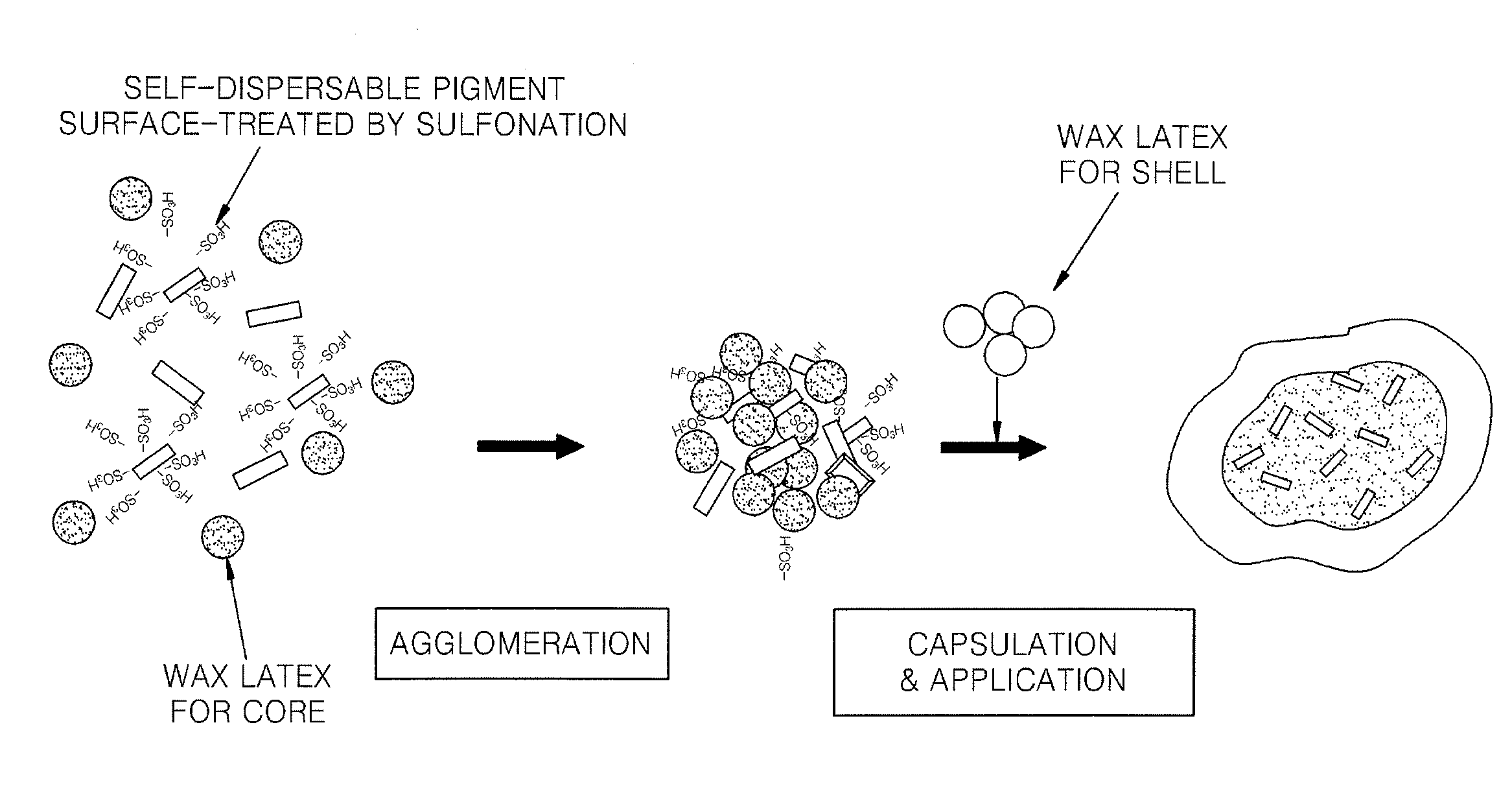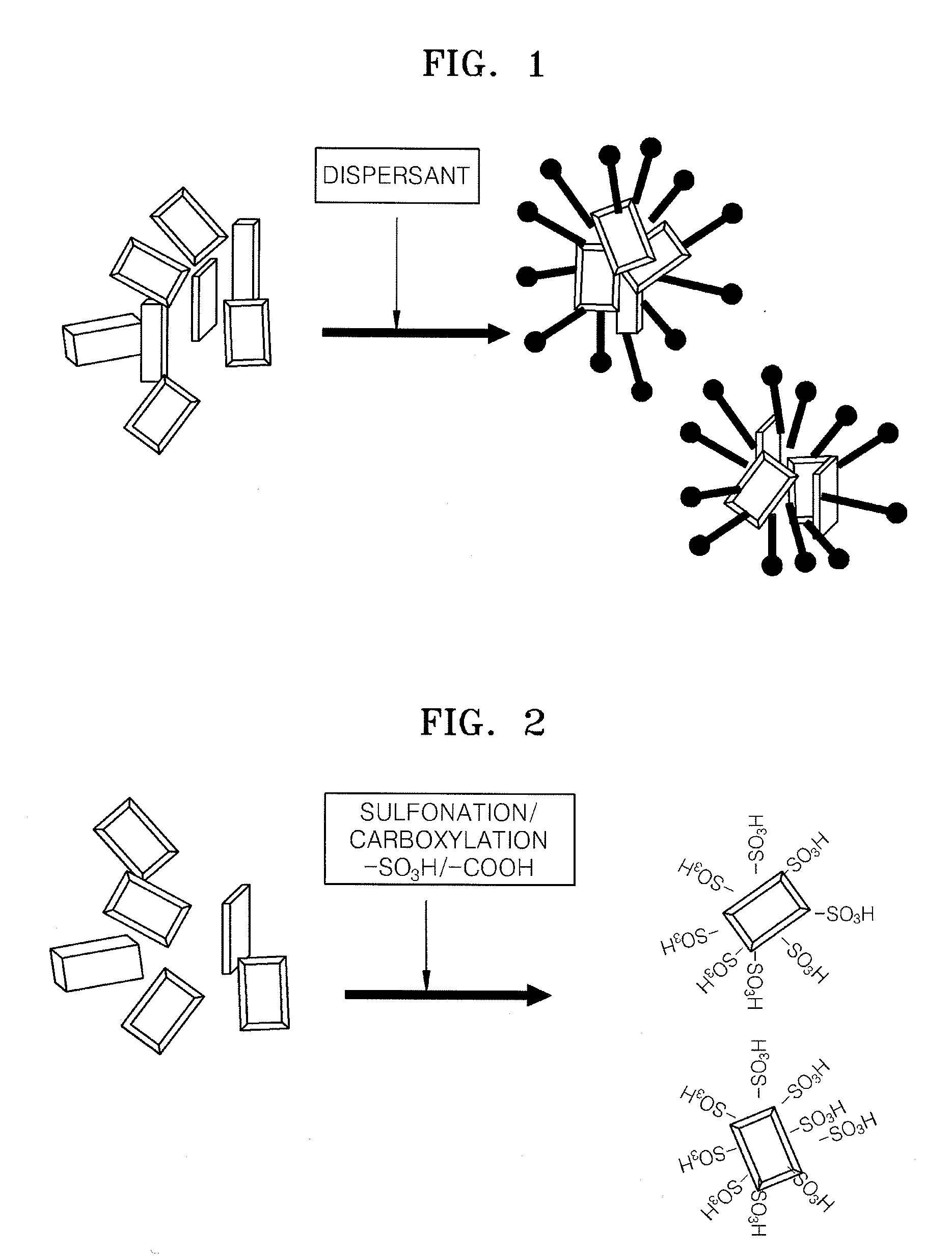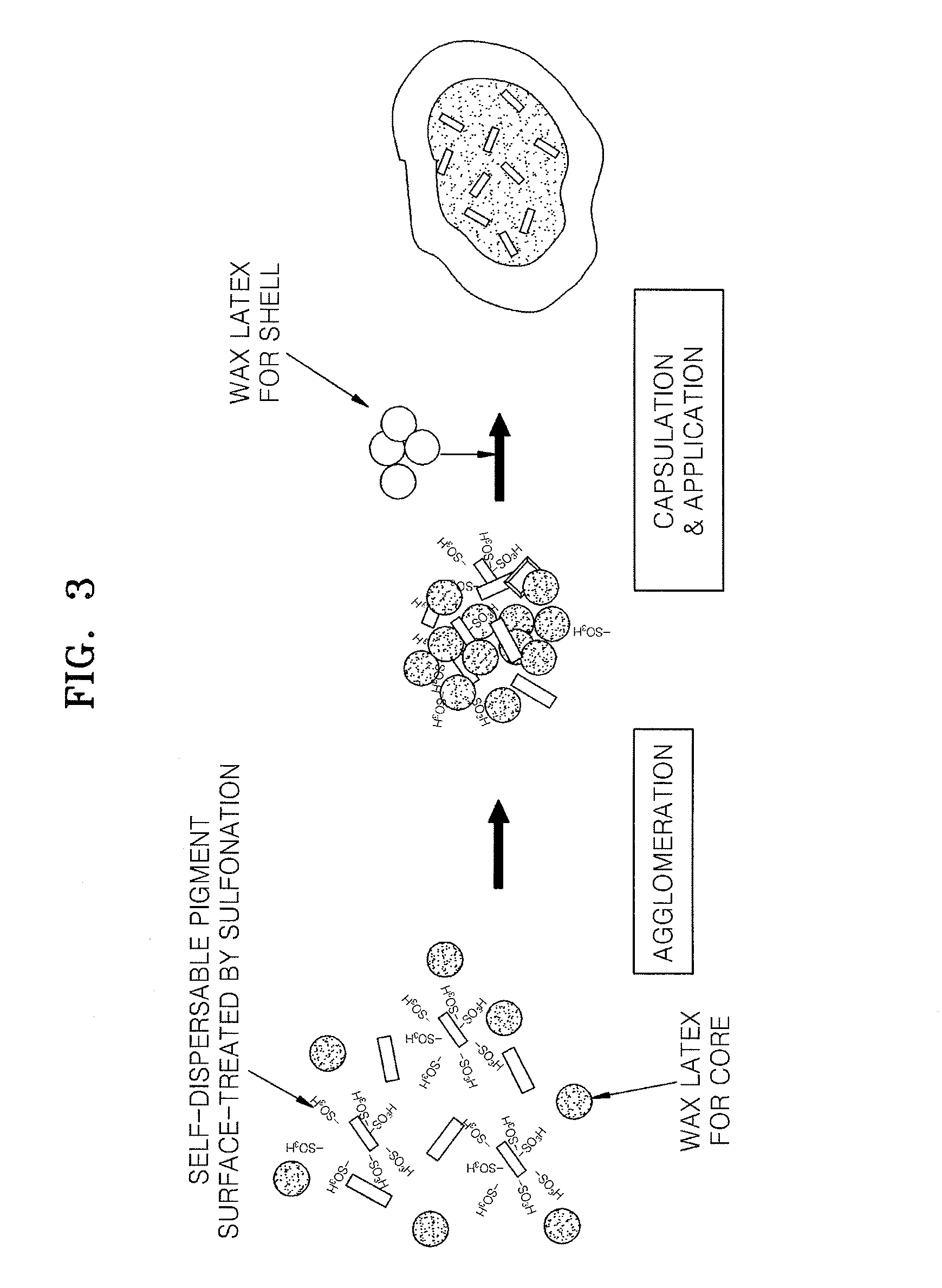Method of preparing toner and toner prepared using the method
a technology of toner and method, applied in the field of method of preparing toner and toner prepared using the method, can solve the problems of affecting toner characteristics as impurities, affecting the quality of toner, and limiting the change/adjustment of toner design for obtaining desirable charging and fixing properties, etc., to achieve less change in charging characteristics, improve long-term storage properties, and reduce the effect of moisture conten
- Summary
- Abstract
- Description
- Claims
- Application Information
AI Technical Summary
Benefits of technology
Problems solved by technology
Method used
Image
Examples
example 1
Preparation of Latex Particles for Core
[0108]While the inside of a 3 L reactor was purged with nitrogen gas, a mixture solution of 1,500 g of distilled deionized water and 2.7 g of poly(ethylene glycol)-ethyl ether methacrylate (PEG-EEM, Aldrich) was added to the reactor and heated at 82° C. while being stirred at 250 rpm. 350 g of a monomer mixture of styrene, n-butyl acrylate, and methacrylic acid in a weight ratio of 68:28:4, 5.1 g of 1-dodecanethiol as a chain transfer agent, and 20 g of ester wax were melted at 60° C., and dispersed using ultrasonic waves for 5 minutes, and then added to the reactor, the temperature of which was maintained at 82° C. 25 g of potassium persulfate (KPS) dissolved in 764 g of deionized water as a water soluble free radical initiator was added to the reactor. The reaction was performed for 2 hours. Then, 220 g of a monomer mixture of styrene, n-butyl acrylate, and methacrylic acid in a weight ratio of 66:30:4 and 3.3 g of 1-dodecanethiol as a chain ...
example 2
[0111]A toner was prepared in the same manner as in Example 1, except that 41 g of a self-dispersable carbon black pigment water dispersion (CaboJet 300B, 10% solid, manufacturer: Cabot) was used instead of the magenta pigment. The prepared toner was in the form of between potato and sphere, and had a volume average particle diameter of about 6.2 μm.
example 3
[0112]A toner was prepared in the same manner as in Example 1, except that 63 g of a self-dispersable cyan pigment water dispersion (CaboJet 250C, 10% solid, manufacturer: Cabot) was used instead of the magenta pigment. The prepared toner was in the form of between potato and sphere, and had a volume average particle diameter of about 6.7 μm.
PUM
| Property | Measurement | Unit |
|---|---|---|
| Tg | aaaaa | aaaaa |
| melting point | aaaaa | aaaaa |
| volume average particle size | aaaaa | aaaaa |
Abstract
Description
Claims
Application Information
 Login to View More
Login to View More - R&D
- Intellectual Property
- Life Sciences
- Materials
- Tech Scout
- Unparalleled Data Quality
- Higher Quality Content
- 60% Fewer Hallucinations
Browse by: Latest US Patents, China's latest patents, Technical Efficacy Thesaurus, Application Domain, Technology Topic, Popular Technical Reports.
© 2025 PatSnap. All rights reserved.Legal|Privacy policy|Modern Slavery Act Transparency Statement|Sitemap|About US| Contact US: help@patsnap.com



